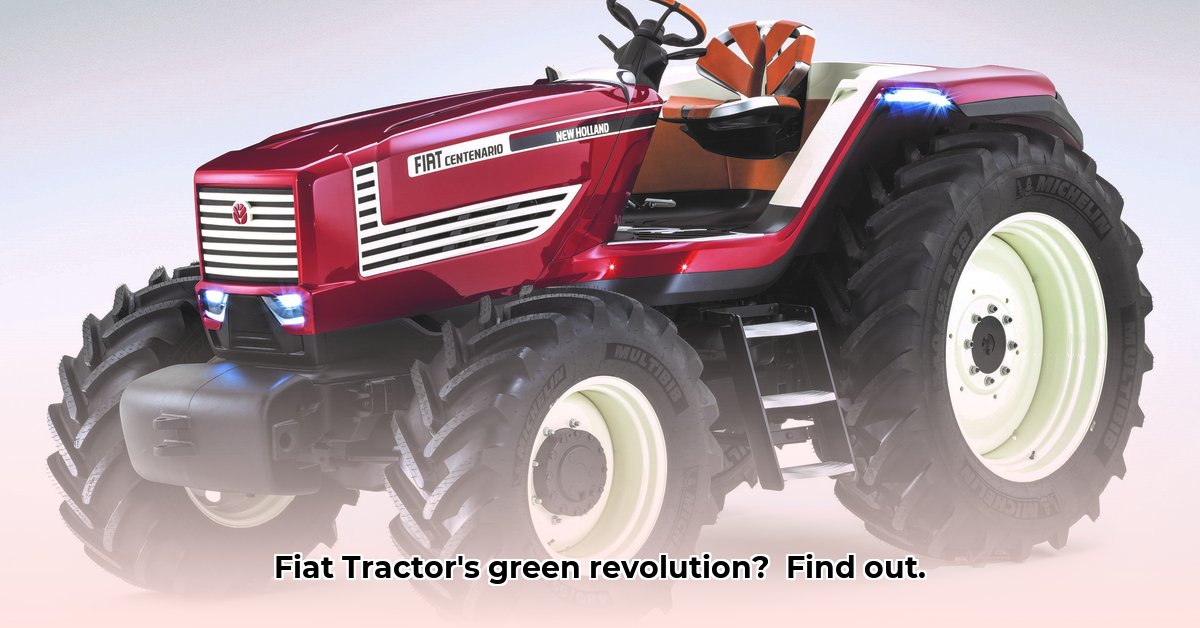
The End of an Era, and the Beginning of New Challenges
The familiar crimson of Fiat tractors, once a ubiquitous sight in agricultural landscapes worldwide, is gradually fading. This isn't merely the disappearance of a brand; it represents a significant shift in the agricultural machinery sector with profound implications for sustainable farming practices. The absorption of Fiat's agricultural arm into CNH Industrial marks a consolidation within the industry, presenting both opportunities and considerable challenges that demand careful consideration. How can we ensure the sustainability of farming systems built around readily repairable equipment like the Fiat tractor, now that those tractors are no longer being produced?
For more information on tractor values, check out this helpful resource: Tractor Values.
How did this consolidation affect farming practices, and what is the long-term impact on both farm economics and the environment? This article will explore these questions, examining the historical context, the challenges faced by farmers, and potential strategies to promote sustainable practices in agriculture, even within a changing industry structure.
The Disappearance of a Dependable Workhorse: A Historical Perspective
For generations, Fiat tractors served as steadfast workhorses, often passed down through families, enduring countless repairs and modifications. Their demise signifies more than just the end of a brand; it represents the potential loss of readily available parts and skilled mechanics intimately familiar with their unique design. Farmers built their livelihoods and expertise around these machines, developing specialized knowledge and skills that are now at risk of being lost. Now there is a new landscape of potentially higher maintenance costs, more complex repairs, and fewer readily accessible spare parts. Is this simply the natural progression of technology, or is this a potential threat to sustainable and economically viable farming?
The Environmental Costs of Modernization
While modern tractors boast impressive fuel efficiency improvements (measured per acre), larger machines often consume considerably more fuel and generate greater absolute emissions. This means that even with significant advances in efficiency, the environmental impact of a larger, more powerful machine might exceed that of an older, smaller tractor, especially when considering the entire machine's lifecycle. Manufacturing and transportation of larger machinery are energy intensive, significantly contributing to the overall carbon footprint.
Moreover, the sophisticated electronics and specialized parts in modern agricultural machinery complicate repairs, increasing costs and downtime. A relatively minor component failure can result in expensive repairs, necessitate specialized technicians, and potentially lead to the environmentally damaging disposal or replacement of parts instead of repair. Does the increased efficiency outweigh the increased potential for waste and maintenance costs?
Charting a Sustainable Future: Strategies for Success
Navigating this complex situation requires a unified effort from key stakeholders:
Farmers: Prioritize preventive maintenance to extend equipment lifespan; explore alternative repair sources (e.g., online marketplaces, used parts dealers, community networks); carefully evaluate newer models for long-term cost- and environmental benefits; and actively share repair knowledge and skills within farming communities.
CNH Industrial: Provide continued support for legacy parts for older Fiat models; proactively invest in and promote environmentally friendly designs, fuel-efficient technologies, and easily repairable components; and actively solicit feedback from farmers to inform design improvements.
Policy Makers and NGOs: Incentivize sustainable farming practices through grants and subsidies supporting equipment repair and the adoption of sustainable machinery; establish environmental impact standards for new agricultural machinery; and invest in research and development of sustainable agricultural technologies.
Researchers and Academics: Conduct comprehensive research into the long-term environmental implications of agricultural machinery consolidation; assess the full life-cycle emissions of various machine models; investigate the role of legacy equipment in sustainable farming; and develop strategies for sustainable design and lifecycle management of agricultural machinery.
This multi-pronged approach would offer the best chance of preserving both the economic viability of farming and the environmental health of our planet. The information gathered and the actions taken collectively would build a more robust and resilient agricultural system.
Maintaining Sustainability: A Practical Guide
Extending the Life of Older Fiat Tractors
Many farmers deeply value their older Fiat tractors, appreciating their robustness and power. Sustainably maintaining these machines, however, presents unique challenges, primarily centered on parts sourcing and electrical system issues.
Parts Sourcing: The decreasing availability of original Fiat parts is a major concern. High prices and scarcity drive up repair costs and contribute to environmental waste from replacing, instead of repairing, components. Farmers should explore alternative sources such as online marketplaces, used parts dealers, and community networks to locate necessary replacements.
Electrical System Maintenance: Older Fiat tractors often experience electrical issues, which can be costly and time-consuming to repair. Regular inspections, preventative cleaning, and, in some cases, cautious upgrades to compatible modern components are crucial in preventing more extensive and costly failures.
Engine Care: The engine is the heart of the tractor. Regular oil changes, careful attention to cooling systems, and proper fuel system maintenance are essential to ensure the engine's longevity and prevent major breakdowns.
By prioritizing preventative maintenance, exploring alternative repair and part sourcing options, and proactively addressing electrical system maintenance, farmers can greatly extend the life of their older Fiat tractors, thereby contributing to sustainable agricultural practices.
The enduring legacy of Fiat tractors shouldn't be a tale of obsolescence but a reminder of the importance of sustainable practices in agriculture. With concerted action, we can build a more resilient and environmentally responsible agricultural sector.